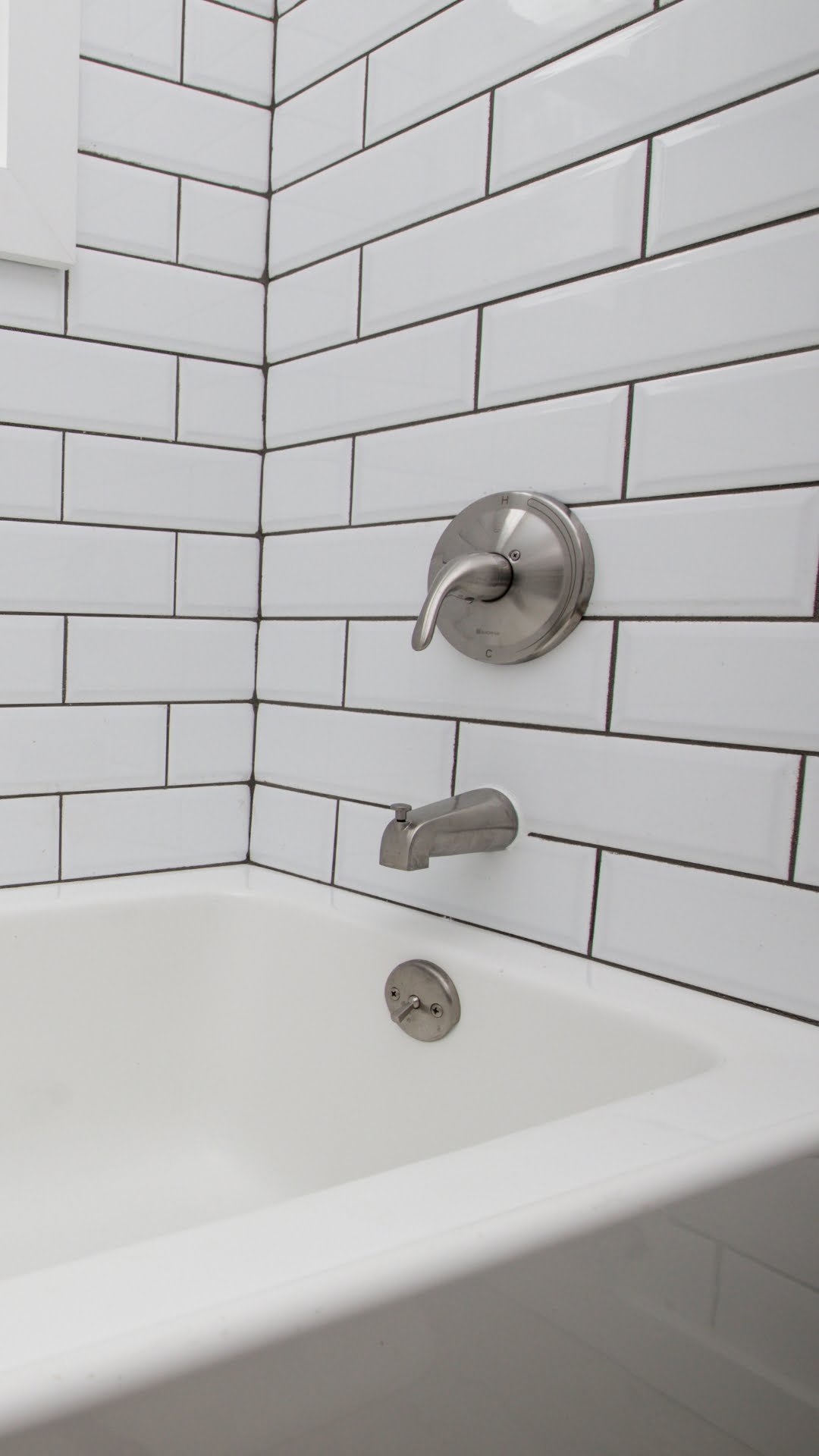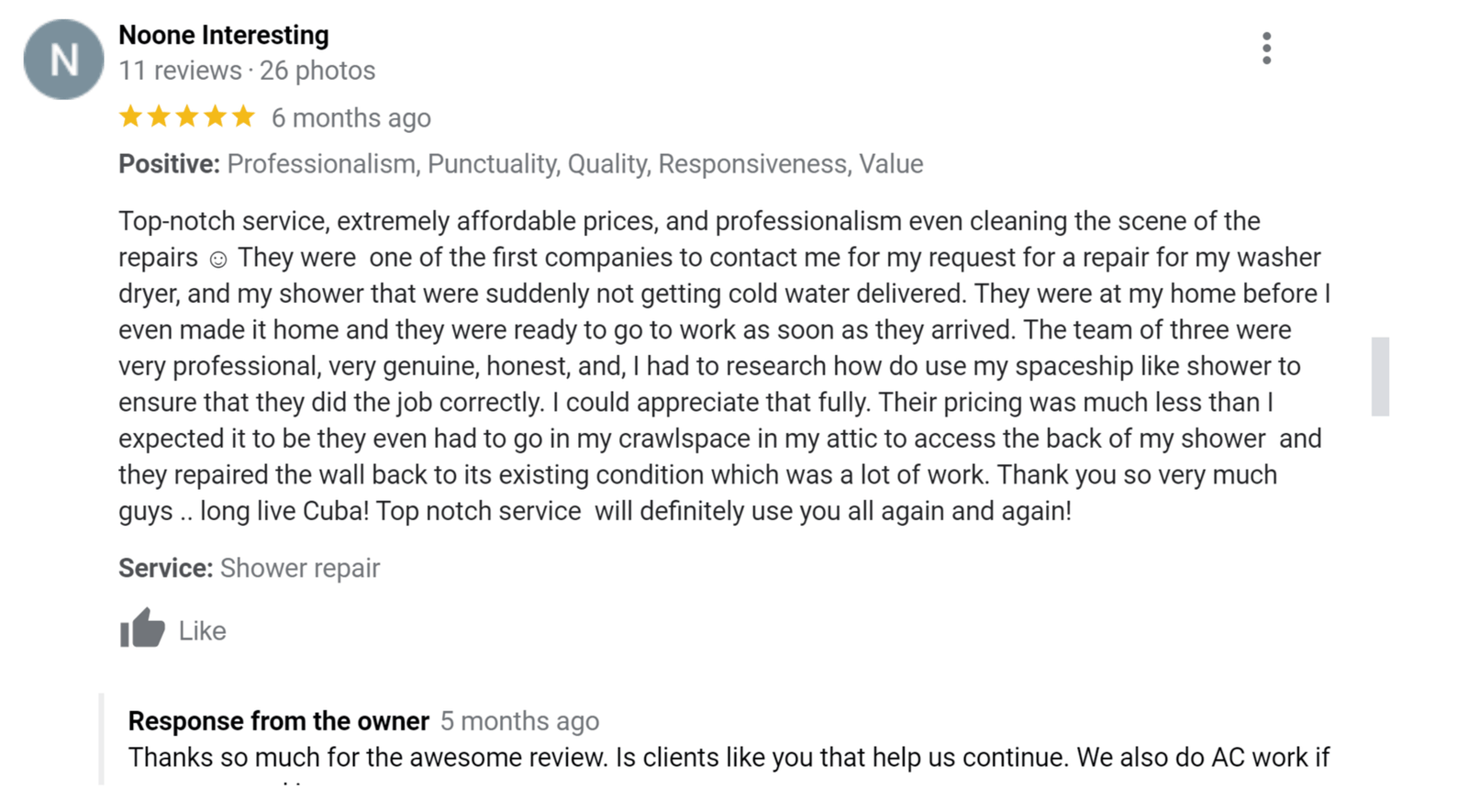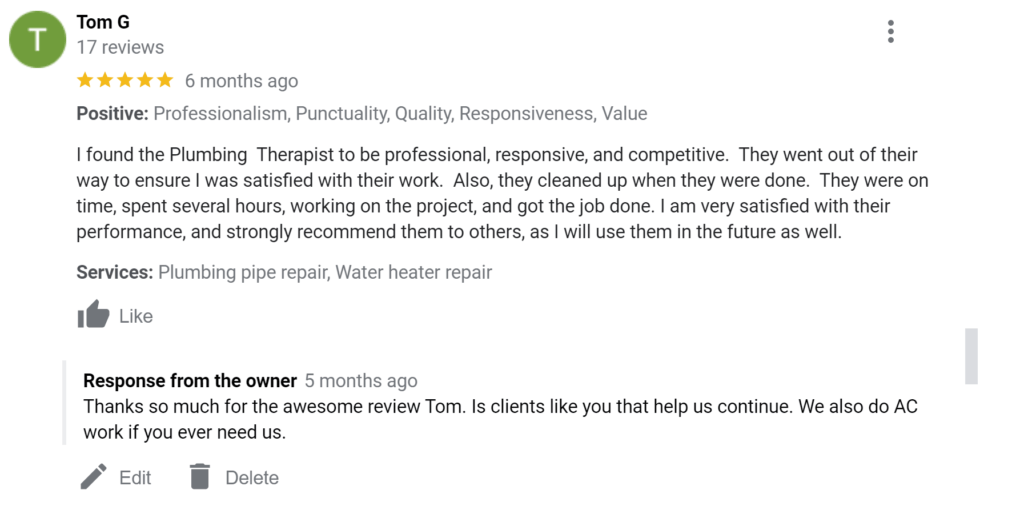Bathtub Replacement
Plumbing Therapist in Tampa Bay offers expert bathtub replacement services. Upgrade your bathroom with our efficient, high-quality installation and fixtures.
Do You Need Our Help ?
Feel free to contact us now
$99 Water Heater Flush + Free Plumbing System Inspection
Bathtub Replacement in Tampa Bay
Transform Your Bathroom with Our Expert Bathtub Replacement Services in Hillsborough County, Pinellas County, and Pasco County
Experience the Difference with Plumbing Therapist
At Plumbing Therapist, we understand that your bathtub is more than just a part of your bathroom; it’s a haven for relaxation and rejuvenation. That’s why we specialize in providing top-notch bathtub replacement services in the Tampa Bay area, ensuring that every soak is a luxurious experience.
Why Choose Us for Your Bathtub Replacement?
- Expertise You Can Trust: Our team of skilled plumbers has extensive experience in bathtub replacements, ensuring a seamless and efficient installation process.
- Quality Materials: We use only the highest quality bathtubs and materials, ensuring durability and a stylish finish that complements your bathroom decor.
- Customized Solutions: Whether you’re looking for a traditional tub, a modern freestanding model, or a therapeutic whirlpool bath, we have options to suit every need and preference.
- Complete Satisfaction: Our commitment to excellence means we aren’t happy until you are. We ensure every detail is perfect, from the initial consultation to the final installation.
Ready for Your New Bathtub?
Transform your bathroom with the help of Plumbing Therapist. Contact us today at (813)-437-4477 to schedule your consultation. Let us help you create the perfect retreat in your home with our professional bathtub replacement services in Tampa Bay.

Why partner with Plumbing Therapist?
Quality, Affordability, and Expertise.

No Hidden or Unexpected Charges

Free Estimates & Online Booking Available

Professionally Trained Technicians

Honesty is Guaranteed

Quick Communication & Service Within 24 Hours

400+ 5 Star Reviews

Why do I need to replace my bathtub?
Replacing your bathtub can be a significant decision, and there are several reasons why it might be necessary or beneficial:
Wear and Tear: Over time, bathtubs can show signs of wear such as cracks, chips, or fading. These issues can worsen, leading to leaks or making your bathroom look outdated and unkempt.
Mold and Mildew: Older bathtubs, especially those with cracks or damaged grout, can harbor mold and mildew, posing health risks and creating unpleasant odors.
Style Update: If you’re renovating your bathroom, replacing an old bathtub can dramatically improve the room’s appearance and increase your home’s value.
Improved Comfort and Functionality: Modern bathtubs offer a range of features such as built-in seats, whirlpool jets, or deeper designs for soaking. Upgrading can enhance your bathing experience significantly.
Accessibility: For those with mobility issues, a traditional bathtub can be challenging to use safely. Replacing it with a walk-in model can enhance safety and independence in the bathroom.
Resale Value: A new, modern bathtub can be a selling point if you’re considering putting your house on the market, potentially increasing its appeal to buyers.
Repair Costs: Sometimes, the cost of repairing an old bathtub, especially if it requires frequent fixes, can be more than replacing it with a new one.
Size and Space Optimization: A new bathtub can be chosen to better fit the space in your bathroom, either freeing up more room or providing a more substantial bathing area, depending on your needs.
Personal Preference: Simply desiring a change, whether for aesthetic reasons, for a different material, or for a bathtub that better fits your lifestyle, is a valid reason for replacement.
If you’re considering replacing your bathtub, it’s essential to weigh these factors and decide what’s most important for your comfort, safety, and the overall functionality of your bathroom.
If you would like more information, feel free to give them a call at (813)-437-4477 or you can book online and get their latest discount!
Customer Testimonials: Real Experiences with Plumbing Therapist
We proudly share the experiences and stories of our valued clients. Their feedback provides a glimpse into the quality of service and commitment to excellence we uphold at Plumbing Therapist. You'll read firsthand how our plumbing solutions have improved comfort and efficiency in homes across Tampa Bay. These testimonials illustrate our dedication to customer satisfaction and the difference our expert services can make.




Your questions answered
Common Bathtub Replacement Questions:
What are the benefits of a new bathtub?
Installing a new bathtub in your home can offer a variety of benefits, enhancing not just your daily routines but also the overall value and appeal of your bathroom. Here are some key advantages:
Improved Aesthetics: A new bathtub can significantly upgrade the look of your bathroom, transforming it into a more modern, stylish space. With various designs available, you can choose a tub that complements your bathroom’s decor and your personal style.
Enhanced Comfort and Relaxation: Modern bathtubs are designed with comfort in mind. Features like ergonomic designs, built-in seats, deeper wells for soaking, and even whirlpool jets can turn your bath time into a luxurious, spa-like experience.
Increased Home Value: A bathroom renovation, including a new bathtub, can add considerable value to your home. This is particularly beneficial if you’re planning to sell your property, as it can be a strong selling point for potential buyers.
Energy Efficiency: Many newer bathtub models are designed to be more energy-efficient. They may retain heat better, reducing the need for additional hot water, and some models are designed to use less water overall, which can save on your utility bills.
Better Hygiene and Easier Maintenance: New bathtubs often come with non-porous surfaces that are easier to clean and more resistant to mold, mildew, and staining. This means a cleaner, more hygienic bath area with less effort.
Customization to Fit Your Needs: Whether you need a standard bathtub, a walk-in tub for accessibility, or a tub with special features like hydrotherapy jets, there’s a wide range of options to suit your specific needs and preferences.
Safety Features: For those with mobility issues or families with young children, newer bathtubs can be equipped with safety features like non-slip surfaces, handrails, and low thresholds to prevent falls and accidents.
Leak Prevention: Older bathtubs can develop leaks, which can be costly to repair and can cause water damage. A new bathtub installation can resolve these issues, ensuring a watertight, leak-free environment.
Space Optimization: A new bathtub can be selected to better fit and utilize the space in your bathroom, whether you’re looking to save space with a smaller model or indulge in a larger, more luxurious tub.
Personal Satisfaction: Lastly, the simple pleasure of having a new, clean, and comfortable bathtub can significantly enhance your daily routine, offering a private retreat for relaxation and rejuvenation.
Overall, a new bathtub can be a worthwhile investment, contributing to both the functionality and aesthetic appeal of your bathroom.
How long does it take to replace a bathtub?
The duration of a bathtub replacement project can vary depending on several factors, including the complexity of the job, the type of bathtub being installed, and the condition of the existing plumbing. Generally, a standard bathtub replacement can take anywhere from a few hours to a couple of days.
Here’s a breakdown of the typical timeline for bathtub replacement:
Initial Preparation: Before the actual bathtub replacement begins, the old bathtub needs to be removed. This process can take a few hours, as it involves carefully disconnecting and removing the existing tub without damaging surrounding tiles or plumbing.
Plumbing Inspection and Adjustments: Once the old tub is out, the next step in the bathtub replacement process is inspecting the existing plumbing. If any adjustments or repairs are needed, this can add extra time. For a straightforward bathtub replacement where no major plumbing changes are required, this step might only take a few hours.
Installation of the New Bathtub: The core part of the bathtub replacement is installing the new tub. This involves positioning the tub, ensuring it’s level, securing it in place, and connecting it to the existing plumbing. For most bathtub replacement projects, this step can be completed within a day.
Finishing Touches: After the new bathtub is installed, additional tasks such as sealing, caulking, and reconnecting fixtures are necessary. These finishing touches in the bathtub replacement process are crucial to ensure no leaks and that everything functions correctly. This can take a few additional hours.
Cleanup and Final Inspection: The last step in the bathtub replacement process involves cleaning up the work area and conducting a final inspection to ensure everything is installed correctly and working as it should. This usually takes about an hour.
In total, a typical bathtub replacement can take anywhere from one to three days. However, it’s important to note that if you are opting for a more complex bathtub replacement, such as installing a larger tub or a different style that requires significant alterations to the existing space, the project could take longer. Always consult with your plumbing professional for a more accurate timeline based on your specific bathtub replacement needs.
Can I replace a bathtub myself, or do I need a professional?
Deciding whether to replace a bathtub yourself or hire a professional depends on several factors, including your DIY skills, experience with plumbing and home renovations, and the complexity of the project.
DIY Bathtub Replacement:
Pros:
- Cost Savings: Doing it yourself can save you the cost of labor.
- Personal Satisfaction: There’s a sense of accomplishment in completing a home improvement project on your own.
Cons:
- Skill Level: Bathtub replacement requires a good understanding of plumbing, carpentry, and sometimes, tiling. If you’re not experienced, you might run into challenges.
- Tools and Equipment: You’ll need the right tools and equipment, which can be an additional investment if you don’t already own them.
- Time-Consuming: Without professional experience, the project might take longer than anticipated.
- Potential for Mistakes: Mistakes can be costly, especially if they lead to leaks or water damage.
Hiring a Professional:
Pros:
- Expertise: Professionals have the necessary skills and experience. They can handle unexpected issues that may arise during the bathtub replacement.
- Efficiency: A professional can complete the job more quickly and efficiently.
- Quality: Professionals ensure the bathtub is installed correctly, reducing the risk of future problems.
- Warranty and Compliance: Professionals often offer warranties on their work and ensure compliance with local building codes.
Cons:
- Cost: The primary downside is the cost of labor, which can be significant depending on the complexity of the job.
Considerations for DIY Bathtub Replacement:
- Assess Your Skills: Honestly evaluate your plumbing, carpentry, and tiling skills.
- Understand the Scope: Research the steps involved in bathtub replacement to understand what you’re taking on.
- Check Local Regulations: Some areas require permits or professional installation for plumbing work.
- Consider the Risks: Mistakes can lead to leaks, water damage, or the need to hire a professional to fix errors, potentially costing more in the long run.
Will a new bathtub add value to my home? use the keyword bathtub replacement
The impact of a bathtub replacement on your home’s value can be quite significant, especially in certain market conditions and when done as part of a well-planned bathroom renovation. Here’s how a bathtub replacement can add value to your home:
Modernizing the Bathroom: A bathtub replacement can be a key element in modernizing an outdated bathroom. A new, contemporary bathtub can transform the space, making it more appealing to potential buyers.
Enhancing Aesthetic Appeal: The visual appeal of a sleek, new bathtub can make a strong impression. This aesthetic improvement can be a deciding factor for buyers when they compare homes.
Improving Functionality: If the bathtub replacement includes upgrading to a model with additional features like jets, a larger size, or a more ergonomic design, it can significantly enhance the functionality of the bathroom, making it more attractive to buyers.
Increasing Energy Efficiency: Some modern bathtubs are designed to be more energy-efficient, which can be an appealing aspect for environmentally conscious buyers and can contribute to overall home efficiency.
Addressing Maintenance Issues: A new bathtub can also mean fewer maintenance issues for potential buyers to worry about. This aspect of a bathtub replacement can be particularly appealing to those who are looking for a move-in-ready home.
Boosting the Overall Bathroom Renovation ROI: While a bathtub replacement alone can add value, its impact is maximized when combined with other bathroom updates like new tiles, improved lighting, or a new vanity. The cumulative effect of these changes can significantly boost your home’s market value.
Targeting Market Preferences: In some markets, particularly in family-oriented neighborhoods or luxury home segments, a high-quality bathtub can be a strong selling point. Understanding market preferences can help in choosing the right bathtub replacement to maximize ROI.
Enhancing Perceived Value: Even if the actual increase in home value isn’t substantial, a new bathtub can make the home more appealing, leading to a quicker sale, which is a valuable outcome in itself.
In summary, a bathtub replacement can add value to your home by modernizing the bathroom, improving its functionality and aesthetic appeal, and making the home more attractive to potential buyers. The extent of value addition will depend on the choices made in terms of the bathtub’s style, features, and how it complements the overall bathroom design.
How do I maintain my new bathtub?
Maintaining your new bathtub is crucial to ensure it retains its appearance and functionality over time. Proper care and regular maintenance can prevent issues like staining, scratching, and the buildup of mold and mildew. Here are some key tips for maintaining your new bathtub:
Regular Cleaning: Clean your bathtub regularly to prevent soap scum, grime, and mineral deposits from building up. Use a non-abrasive cleaner suitable for your bathtub’s material. For acrylic and fiberglass tubs, use a mild detergent or all-purpose cleaner. For enamel bathtubs, you can use a slightly more abrasive cleaner, but be cautious not to scratch the surface.
Rinse After Use: After each use, rinse the bathtub with water to remove any soap or shampoo residue. This simple step can go a long way in keeping your tub clean.
Soft Cleaning Tools: Use a soft cloth or sponge for cleaning. Avoid using abrasive scrubbers like steel wool or rough scouring pads, as they can scratch and damage the surface of the bathtub.
Tackle Stains Promptly: If you notice stains, address them as soon as possible. The longer a stain sits, the harder it is to remove. Use a cleaner appropriate for the type of stain and your bathtub’s material.
Avoid Harsh Chemicals: Harsh chemicals can damage the finish of your bathtub. Avoid cleaners with bleach or ammonia, especially on acrylic or enamel tubs. Always read the label to ensure the cleaner is safe for your specific type of bathtub.
Regular Inspection for Leaks: Check the faucets and the area around the bathtub for leaks regularly. Leaks can lead to water damage and mold growth, so it’s important to repair any leaks as soon as they are detected.
Use a Bathtub Mat Carefully: If you use a bathtub mat for safety, remove it after each use and let it dry. Leaving a wet mat in the tub can lead to mold and mildew growth.
Prevent Clogs: Keep the drain clear of hair and other debris that can cause clogs. Using a drain strainer can help catch hair and prevent clogging.
Avoid Dropping Heavy Objects: Be careful not to drop heavy objects in the tub, as this can cause chips or cracks, especially in acrylic or fiberglass bathtubs.
Regularly Seal Grout: If your bathtub is surrounded by tile with grout, make sure to seal the grout regularly to prevent moisture penetration and mold growth.
By following these maintenance tips, you can keep your new bathtub looking clean and new for years to come. Regular maintenance not only preserves the appearance of your bathtub but also ensures a hygienic and pleasant bathing environment.
